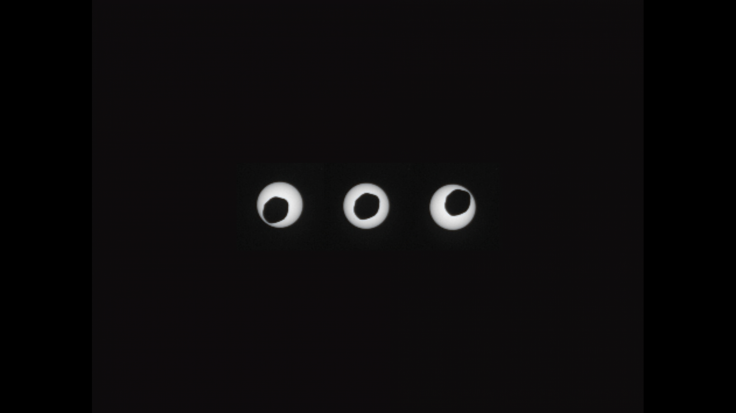NASA’s Curiosity Rover Captures Solar Eclipse As Mars’ Moon Phobos Passes In Front Of The Sun
NASA’s Mars Rover Curiosity has captured Phobos, Mars’ larger moon, eclipsing the sun in a series of new photos. The solar eclipse is classified as annular since the sun can be seen as a ring around Phobos.

Curiosity used its onboard camera, equipped with a telephoto lens, to capture Phobos’ passage past the sun. The image was captured on Aug. 17, which marked, according to NASA, the 369th sol, Martian solar day, of Curiosity’s mission on Mars.
Researchers stopped Curiosity’s observations in order to capture the solar eclipse. In addition to an impressive image, the new photos, and the rover’s other observations, help researchers better understand Phobos and its orbit. Based on Curiosity’s photos, the solar eclipse occurred around mid-day with Phobos almost directly overhead of the rover. Mark Lemmon, of Texas A&M University said in a statement, “This event occurred near noon at Curiosity's location, which put Phobos at its closest point to the rover, appearing larger against the sun than it would at other times of day.” Curiosity’s solar eclipse images are as close as it gets for a total eclipse from Mars, said Lemmon.
Based on Curiosity’s observations, researchers discovered Phobos transits closer to the sun’s center than was previously estimated. Phobos was two to three kilometers (one to two miles) closer to the center of the sun and Lemmon remarked of the photo, “This one is by far the most detailed image of any Martian lunar transit ever taken, and it is especially useful because it is annular.”
Previously Curiosity was able to capture a lunar eclipse as Phobos passes in front of Deimos, the smaller of Mars’ two moons. Researchers may also create a movie of the solar eclipse using the images captured by Curiosity in the near future.
© Copyright IBTimes 2025. All rights reserved.






















